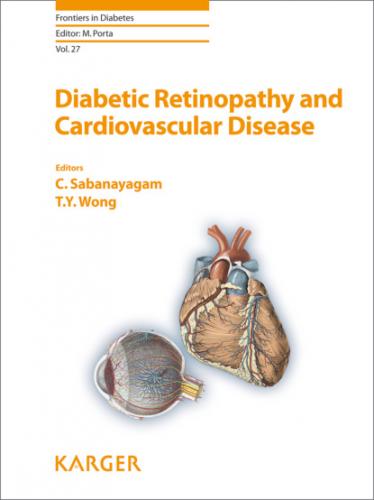Glycaemia and Cardiovascular Risk
Cardiovascular disease has long been recognised as the most significant cause of morbidity and mortality in diabetes. Nevertheless, studies attempting to quantify the degree of increased risk inferred by diabetes or elucidate the exact nature of the relationship between different levels of glycaemia and cardiovascular outcomes have not always had consistent results.
Glycaemic thresholds for the diagnosis of diabetes were determined largely on the basis of the relationship between glycaemia and prevalent microvascular disease, particularly retinopathy [17]. Fasting plasma glucose, 2-h plasma glucose following an oral glucose load and haemoglobin A1c (HbA1c) all have narrow threshold ranges within which the prevalence of retinopathy begins to increase significantly [18]. On the other hand, the relationship between glycaemia and cardiovascular outcomes has been reported as a linear relationship with progressively lower risk even below diabetes thresholds [19]. A cohort analysis of the seminal United Kingdom Prospective Diabetes Study (UKPDS) found near linear relationships between HbA1c and incident cardiovascular complications among people with diabetes (Fig. 4), with no thresholds of glycaemia observed [20]. Every 1% lower level of mean HbA1c was associated with a 14% lower risk of myocardial infarction. The UKPDS enrolled patients with recently diagnosed diabetes.
Fig. 4. Association of HbA1c with mortality and incident cardiovascular complications among 4,585 people with type 2 diabetes from the UKPDS. Updated HbA1c is the mean of baseline and annual HbA1c levels during follow-up calculated for each participant. Data from Stratton et al. [20].
More recent data suggest that there may in fact be a glycaemic threshold, above which the risk of cardiovascular events begins to rise. Among people with established type 2 diabetes in the Action in Diabetes and Vascular disease: Preterax and Diamicron Modified Release Controlled Evaluation (ADVANCE) trial, risk of macrovascular disease and mortality began to rise within a threshold range of HbA1c around 6.5 and 7.0% [21]. Above the threshold there was a log-linear relationship between HbA1c and macrovascular complications such that for every 1% gain in mean HbA1c, there was a 38% higher risk of a macrovascular event. Below the threshold, there was no significant association between HbA1c levels and risk. Similarly, in a meta-analysis of individual-level data from 102 prospective studies with almost 700,000 participants, fasting plasma glucose was found to have a non-linear relationship with coronary heart disease and stroke (Fig. 5) [4]. Below 5.6 mmol/L there were no material associations between fasting plasma glucose and vascular risk among people with no known history of diabetes. Understanding the relationship between glycaemia and cardiovascular risk is a key component of determining which people may benefit from targeted preventive interventions.
Fig. 5. Hazard ratios (HRs) for coronary artery disease by mean baseline fasting plasma glucose (FPG) concentration in patients without known diabetes. Patients grouped into 0.5 mmol/L intervals (e.g., HR calculated for patients with FPG 5.5–6.0 mmol/L and plotted against their mean FPG). With permission from Emerging Risk Factors Collaboration [4].
Is Diabetes a Risk Equivalent to Previous Coronary Disease?
A widely cited Finnish study published in 1998 found that people with diabetes and no history of myocardial infarction had as high a risk of myocardial infarction as people with a history of prior myocardial infarction but not diabetes (7-year incidences of 20.2 and 18.8% respectively) [22]. The view that diabetes is a risk equivalent to established coronary vascular disease for incident cardiac events is still often espoused today [10]. However, it is probably not true in most populations. A meta-analysis of 13 studies involving more than 45,000 patients found the risk of myocardial infarction was 43% lower in patients with diabetes but no personal history of coronary disease compared to patients without diabetes but with prior myocardial infarction [23]. A contemporary study from a membership-based health service in the United States, conducted using electronic medical record data from over 1.5 million adults, also found existing coronary disease to be associated with a higher incidence of myocardial infarction than diabetes alone (22.5 vs. 12.2 events per 1,000 person-years) [24]. Knowing whether or not diabetes is a risk equivalent to known coronary disease is relevant in guiding the approach to management of cardiovascular risk factors in patients with diabetes. If diabetes is a risk equivalent, perhaps intensive therapy, as used in secondary prevention of ischaemic heart disease, should be adopted routinely for all patients with diabetes. On the contrary, perhaps the clinical approach should vary depending on a more nuanced assessment of an individual patient’s risk, with more intensive intervention reserved for those at higher personal risk.
Variability in Risk Associated with Diabetes
Despite diabetes being a strong independent risk factor for cardiovascular disease, the degree of risk inferred by the presence of diabetes is not the same in all groups. Interestingly, the relative risk associated with diabetes is greater in groups with lower absolute cardiovascular risk, including among women, younger age groups, non-smokers and those with lower-than-average blood pressure [4]. A meta-analysis of 64 cohorts, including more than 850,000 individuals found that the effect of diabetes on the risk of incident coronary heart disease was 44% greater in women than in men, though the absolute risk remains higher in men [25]. This difference in the risk posed by diabetes may in part relate to the inequitable management of cardiometabolic disease in women. There is evidence that women are less likely than men to be treated sufficiently to meet target risk factor levels [26]. Nevertheless, in more recent studies, where treatment was felt to be equitable, there is still evidence of a disparity in the relative risk of cardiovascular disease inferred by diabetes [25]. At the time of diagnosis of diabetes, women tend to have greater adiposity and less favourable levels of other cardiovascular risk factors. It is thought that women may tend to have a greater deterioration
